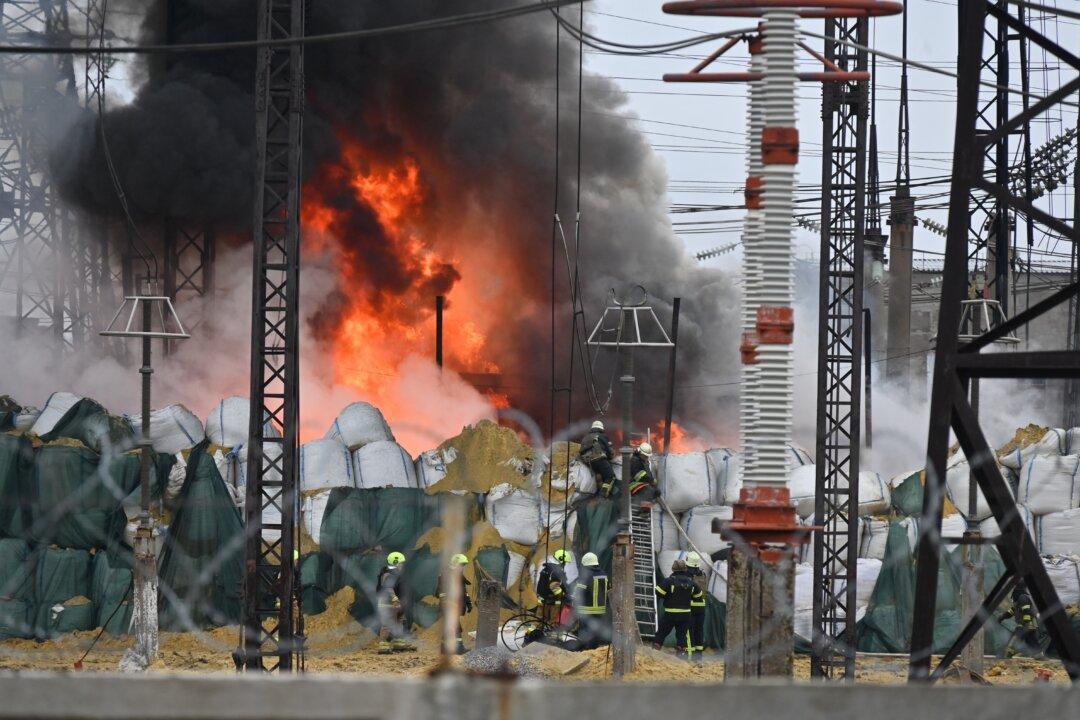Russia has a new weapon, already used at scale in Ukraine, that could tip the balance there and in many more wars to come if our side keeps delaying more and better weapons for our Ukrainian partners.
Russia’s 1.5-ton “glide bomb” is a Soviet-era iron gravity variant, dropped by plane from a high altitude, with new pop-out wings and satellite navigation add-ons. This $20,000 retrofit of an old bomb, which costs just a few thousand dollars, allows fire-and-forget pinpoint targeting of most fixed Ukrainian positions. When hit, targets turn into craters 22 yards wide.
Russia has hundreds of thousands of the old gravity bombs left over from the Soviet period. It is rapidly retrofitting them and developing more powerful 3.4-ton and cluster bomb variants.
The scale of Russian glide bomb production and use, reportedly over 100 per day, is making Ukrainian cities, towns, and bunkers along the entire front line vulnerable. The bombs are 90 times more powerful than Russia’s 14-pound artillery shell. They range as far as Russian pilots dare to fly, plus up to another 40 miles in glide mode. By comparison, some of the latest Russian artillery systems have a range of just 44 miles from positions stuck behind Russian lines.
In April alone, over 3,200 Russian glide bombs hit Ukraine, including many residential homes. By targeting bunkers on the outskirts of Kharkiv this month, the bombs facilitated the Russian advance within 20 miles of Ukraine’s second-largest city. The glide bombs were also key to Russia’s February capture of the Ukrainian town of Avdiivka, its only other major gain of the past year.
Defending against glide bombs with surface-to-air missiles that cost as much as $3 million each is a waste of money. However, there are three main ways that Ukraine can more economically defeat the weapon.
The cheapest and least risky approach is to improve Ukrainian electronic warfare capabilities, including GPS jamming and spoofing, to divert the bombs from their targets. But according to Michael Peck at the Center for European Policy Analysis, “Russia’s electronic warfare capabilities far exceed those of Ukraine and its Western allies.”
A second option would be more long-range air defenses, including the U.S. Patriot and Franco-Italian SAMP-T, to defeat Russian fighters and bombers in the sky before they release their bombs. Patriot systems, forward-deployed near the front line, reportedly downed 15 Russian military planes in February alone. However, two such systems were destroyed by Russia in March, so Ukraine pulled the rest back from the front. Ukraine says it needs 25 Patriot systems to protect itself. The 60 upgraded F-16 fighter jets from the 1980s, some of which Ukraine will start operating this summer, will also help defeat Russian planes.
The riskiest defense is to use the F-16s, along with long-range Western missiles and Ukraine’s existing Soviet-era fighters, to target the glide bomb kill chain in Russia and occupied Crimea, including airfields, weapons depots, and bomb factories. Over the past year, Ukraine has deployed the U.S. version of glide bombs, the Joint Direct Attack Munition-Extended Range (JDAM-ERs). The United States plans to counter Russian jamming of JDAM-ERs with an upgraded GPS-homing version for delivery to Ukraine in 2025.
Ukraine is not waiting when it can use other weapons. On May 17, Ukraine reportedly launched over 100 drones and missiles against various strategic targets in southwestern Russia and Crimea, destroying at least three Russian fighter jets on the ground and hitting oil, fuel, and power facilities.
Ukraine’s partners, including the United States, have discouraged it from hitting Russian soil, especially oil facilities, for fear of “provoking” Mr. Putin further and increasing inflation. Germany does not even allow the use of its long-range missiles against targets in Crimea.
However, there are indications that the U.S. position is changing, including Secretary of State Antony Blinken’s May 15 statement that “We’ve not encouraged or enabled strikes outside Ukraine but ultimately Ukraine has to make decisions for itself about how it’s going to conduct this war.”
On May 3, Lord David Cameron, Britain’s foreign minister and former prime minister, said that Ukraine has a right to strike Russian territory directly and must itself decide how to use British weapons. “Just as Russia is striking inside Ukraine,” he said, “you can quite understand why Ukraine feels the need to make sure it’s defending itself.”
While this could provoke Mr. Putin further, the Russian leader seems to be provoking himself no matter what we do. Shows of U.S. and allied weakness under fire, including the fear of letting Ukraine hit Russian territory, could encourage not only Mr. Putin in his aggression but other rogue states as well, including China, North Korea, Iran, and Venezuela.





